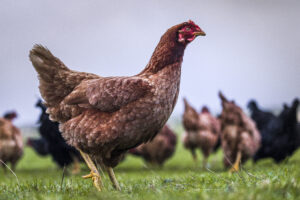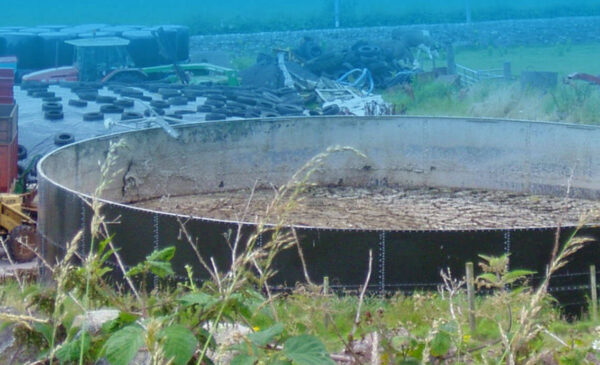Reducing diffuse pollution risks can bring a financial benefit to the business whilst also protecting the environment. Runoff from around the farm can pollute local water quality and lead to wider impacts across a catchment. The effects of diffuse pollution on water quality can often be seen miles away from the source, for example beaches designated as ‘bathing waters’ can be affected by runoff coming from further up the catchment.
Materials with a high Biochemical Oxygen Demand (BOD) and/or Chemical Oxygen Demand (COD) will be highly polluting if allowed to enter a watercourse by seepage or run-off. Anything with a value above that of the BOD of the receiving water could have a negative impact on water quality. Over-application of these substances to land can also result in a temporary soil oxygen depletion leading to poor plant growth. Table 1.1 outlines the pollution potential, measured in terms of BOD, from various substances common to a range of farming enterprises.
Table 1.1 Biological Oxygen Demand
| Substance | BOD (mg/l)* |
| Raw milk | 140,000 |
| Silage effluent | 30,000 to 80,000 |
| Pig slurry | 20,000 to 30,000 |
| Liquid sewage sludge | 10,000 to 20,000 |
| Draff run-off | 10,000 to 20,000 |
| Cattle slurry | 10,000 to 20,000 |
| Midden run-off | 1,000 to 2,000 |
| Dilute dairy parlour and yard washings | 1,000 to 2,000 |
| Lightly contaminated ’dirty water’ | 1,000 to 2,000 |
| Vegetable washings | 500 to 3,000 |
| Raw domestic sewage | 300 to 400 |
| Treated domestic sewage from septic tank | <100 |
| Treated domestic sewage from sewage works | <20 |
| River water (high quality) | <3 |
*BOD is a measure of the amount of oxygen needed by microbes to break down organic matter present, therefore, used as a measure of polluting potential.
Agricultural emissions related to air quality are dominated by ammonia and agriculture accounts for around 90% of total ammonia emissions in Scotland. The majority of emissions are the result of manure management and use.
Ammonia is a key air pollutant that can have significant effects on the environment and human health. Nitrogen deposition (from both ammonia emissions and nitrogen oxides) effectively provides fertiliser from the air, leading to the eutrophication of our naturally nutrient-poor ecosystems and related damage to plant and animal species through eutrophication and acidification. Ammonia also produces odours and is a major contributor to secondary fine particulate matter formation, impacting on both human and ecosystem health.

Ammonia and other nitrogen emissions from farming can be significantly reduced by improving the efficiency of how livestock, their manure and other fertilisers are managed.
Further information
- Read about the current Scottish Government air quality strategy, Cleaner Air for Scotland 2.
- The Inventory of Ammonia Emissions from UK Agriculture (2022) outlines information on a range of ammonia mitigation measures.
- Read about ammonia emissions to air from slurry and manure.
- Trends on ammonia emissions for Scotland can be found at: Air Pollutant Inventories for England, Scotland, Wales, and Northern Ireland: 2005-2020 (defra.gov.uk).
Image credit: Craig Stephen
In addition to the pollution risk, some farming practices also generate strong odours leading to public complaints. Local authorities have powers to determine whether an agricultural activity represents a statutory nuisance and this may involve monitoring the activity and its impacts. Where they believe this to be the case, they can serve an abatement notice requiring the cessation of the nuisance (or prohibiting or restricting its reoccurrence). Where the requirements of a notice are not being complied with the local authority can seek a prosecution. Details of how statutory nuisance is regulated in Scotland can be found at: Nuisance provisions of the Public Health etc (Scotland) Act 2008: guidance – gov.scot (www.gov.scot).




